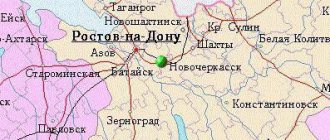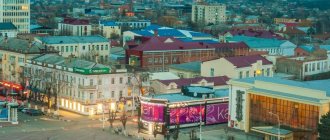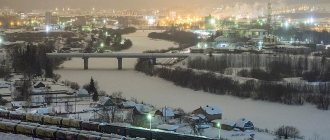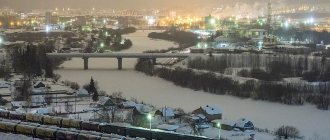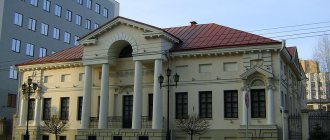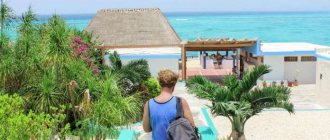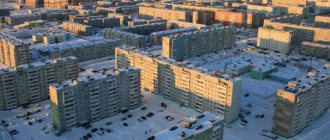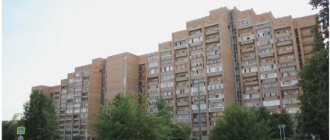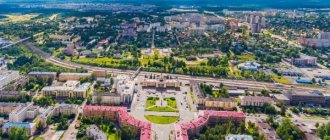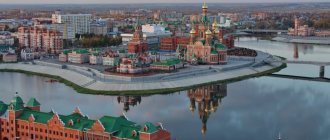Essentuki – resort town of Caucasian Mineral Waters, which has federal significance in our country. It is located in the southern part of the Stavropol Territory, in the valley of the Podkumok River. Essentuki is located 200 km southeast of Stavropol.
The name of the city has its own secret. The fact is that there are several versions of the origin of the name of the resort, and they all have a completely logical explanation. The most common version says that the name goes back to the Circassian phrase “yessen” and “tuku”, which means “habitual corner”. But there is another popular version, it was studied by archaeologist and orientalist M.E. Masson. During the excavations, it turned out that near Essentuki in the 13th-15th centuries there was a large Golden Horde settlement. This gave Masson reason to believe that the name of the city could come from the name of Khan Essentug - “es-sen” - fat, “tug” - sign, bunchuk.
The population of Essentuki has been growing steadily since 2006 for 16 years. As of 2022, 114,824 people live in the resort city.
City districts
- The city is divided into microdistricts: four of them are simply numbered: “ Microdistrict 1 ; Microdistrict 2 , Microdistrict 3, Microdistrict 4. " They received their names one by one in the 60s. last century, but there are also areas with interesting names, and each of them has its own history.
- The resort area is a tourist area. Narzan galleries, sanatoriums, parks and mud baths are located here.
- Kurortny - it is adjacent to the Resort zone, but there are more residential buildings in it
- Beshtaugorets is an area from which Mount Beshtau is best visible. This is probably where its name came from
- Fantasia (Microdistrict 3, sometimes called “Veteran”) – a residential area with developed social infrastructure
- Green – there used to be a market here where vegetables, herbs and flowers were sold
- White coal - the first hydroelectric power station in Russia appeared in this area
Prices for 2022, official websites and telephone numbers of health resorts
Of course, the cost of vouchers depends on many conditions: month of stay, vacation with or without treatment, room category, booking method, etc. Here I will give prices for September 2022 for the simplest accommodation and basic treatment.
Attention! All prices are taken from the official websites of the sanatoriums on May 21, 2017. I can't guarantee you that they won't change. Let me just say that in practice, this rarely happens.
Cost for 1 day per person in double occupancy (accommodation + meals + basic treatment):
- Sanatorium “Istok” https://istok-kmv.ru/ 8(800)100-51-08 — 6000 rub.
- Sanatorium named after Secheny IM" https://www.sechenova.com/ 8(87934)6-44-78 – 2900 rub.
- Sanatorium “Kazakhstan” https://kazakhstan-kmv.ru/ 8 (87934) 4-85-05 – 4300 rub.
- Sanatorium “Healing Key” https://www.kurortspa.ru/ 8 (87934) 6-22-43, 4-34-56 – 1900 rub.
- Sanatorium named after MI Kalinin" https://sankalinin.org/ 8 (8 7934) 4-14 -0 – 3500 rub.
- Sanatorium "Centrosoyuz of the Russian Federation" https://www.kurortcenter.ru/ 8 (8 7934) 6-02-61 – 2000 rub.
- Sanatorium “Rus” https://ruskmv.ru/ – 5900/6200 rub.
- Sanatorium “Niva” https://niva-essentuki.com/ 8 (87934) 5-49-07, 5-49-13 – 2650 rub.
- Sanatorium “Nadezhda” https://nadezhda-kmv.ru/ 8(800) 500-88-17 – 2427 rub.
- Sanatorium “Moscow” https://san-moscow.ru/ 8 (87934) 6-20-98 – 4380 rub.
- Sanatorium named after Academician Pavlova" https://www.pavlova-kmv.ru/ 8 (87934)6-76-01 – 1980 rub.
- Boarding house "Plaza" https://plaza-essentuki.ru/ 8(800)707-87-80 – 3800 rub.
- Sanatorium "Russia" https://www.russia-kmv.ru/ 8(800)775-73-15 - for now the price is set until June 30 - 3200 rubles.
- Sanatorium “Victoria” https://www.victoria-essentuki.ru/ 8 (87934) 6-26-96, 4-34-64 — 3100 rub.
- Sanatorium “Metallurg” https://www.metallurgess.ru/ 8 (87934)6-12-55, 5-53-24 – 3600 rub.
- Sanatorium named after Andzhievsky" https://www.sanand.ru/ 8 (87934)4-34-52 – 2500 rub.
- MC “Yunost” https://www.yunostkmv.ru/ 8 (800)700-65-30 – 2500/2800 rub.
Sights of Essentuki
Guests consider the most famous sights of Essentuki to be:
- Essentuki Museum of History and Local Lore named after. V. P. Shpakovsky. Opened in 1963. Located in an old mansion that once belonged to the priest D. Ya. Karagachev. The museum's collections are full of stunning exhibits. Among them are elements of building materials from mausoleums from the times of the Golden Horde and furniture from the 18th century with bone inlay.
- Mud bath named after N. A. Semashko. She has an interesting story. In 1911, a competition for architects was announced in St. Petersburg. Conditions: come up with the most interesting project for the Essentuki mud baths. Architect Evgeniy Shretter was inspired by ancient motifs; his design for a building in ancient neoclassicism turned out to be the best. At the main entrance of the mud baths sit stone Asclepius and Hygeia - the god of healing and the goddess of purity and health, father and daughter.
An interesting fact is the walls of the mud bath named after N.A. Semashko exterior is lined with dolomite from the Alikonovsky Gorge in Kislovodsk
- Resort healing park. In 1874, by order of Prince Vorontsov, tree planting began in front of the gallery of source No. 17. And already in 1901, F.I. performed in the theater built there. Chaliapin and played in the performances of V.F. Komissarzhevskaya. The park has many attractions: a rotunda colonnade, an Oreanda gazebo, drinking pump rooms in an antique style
- Tsanderovsky Mechanotherapeutic Institute. The institute building was built in 1902. The place was swampy, so the foundation of the building was made of stone. The architecture of the mechanotherapy hall has no analogues in Russia.
- Fountain in the central square. This fountain is the largest in the south of Russia. Its area is more than 400 square meters. It does not have a bowl, so it is not visible when turned off. Literally every minute the fountain throws 10 tons of water into the air. This is one of the most popular places in the city
All attractions>
Hard times
During the First and Second World Wars, Essentuki was turned into a large army hospital; in the early 1920s, Red Army soldiers were treated here. After difficult events for the country, the resort slowly but persistently restored its strength and resources in order to perform its main functions - to treat people using the unique natural properties of the area.
In 1925, the village began to be called the city of Essentuki, several sanatoriums operated there, as well as medical institutions opened in nationalized buildings; New medical institutions and health resorts were built, landscaping and landscaping work was carried out.
With the beginning of the 1930s, the drinking and balneological resort of Essentuki became year-round, which made it possible to increase the number of people in need of treatment by almost 100%. After a source with carbonated water was found in the park, the use of a new type of medicinal baths began. And all local sources then provided about 1 million liters of water per day. Before World War II, up to 50 thousand people visited it annually.
Essentuki was liberated from the Nazis in the winter of 1943, and the city again, along with treating the wounded, had to rebuild a lot. At the end of the 1940s, 6 former sanatoriums could fully operate; new ones began to be built in the 1950s, and parks were also restored and decorated.
The efforts of the state and resort authorities in these and subsequent years led to the fact that Essentuki again experienced a significant increase in attendance, which required a modern approach to the resort infrastructure.
By 1973, there was a need to create a specialized department that would deal with the planned development of Kavminvod resorts and their operation. It began to be based in the city of Essentuki. The city grew and paid attention not only to health care, but also to social and production needs.
In the 1980s, the plan to open a 1,500-seat touring theater with an electronic organ was realized, several new sanatoriums were built and a number of old sanatoriums were reconstructed, and students began studying at medical and pedagogical schools.
Centuries-long efforts to organize the city's resort activities were largely nullified in the 1990s. Like the whole country, Essentuki experienced waves of privatization, the transfer of property from hand to hand, and the repurposing of sanatorium and hotel buildings.
Due to financial difficulties, the flow of vacationers sharply decreased, the volume of vouchers allocated at the expense of trade unions decreased, there was no way to pay salaries to employees of resort institutions, they were sent on indefinite leave, and some sanatoriums were closed.
However, even in this difficult time, the leading role of the city of Essentuki in the resort region was confirmed: in 1992, the Administration of the Caucasian Mineral Waters began to work there.
Climate
The climate of Essentuki is continental, mountain-steppe. The average July temperature reaches +20.4 °C. In June it often rains, in July the days and nights are hotter. Spring in Essentuki does not last long. Temperatures begin to rise in April. In early May, lilacs usually begin to bloom. But autumn in the resort city is long. Essentuki autumn is warm, only the nights are cool. Frosts usually begin in mid-October. Winter in Essentuki is never cold - there are frequent thaws accompanied by positive temperatures. The average January temperature in Essentuki is approximately −4.2 °C. It is worth noting that the resort’s weather is capricious. Fog occurs often, but goes away quickly. But tourists should not worry - in terms of the amount of sunshine (more than 1825 hours), Essentuki ranks second among the cities of the Caucasian Sea after Kislovodsk.
Read more about the climate in Essentuki>
How to get there?
The city of Essentuki is easily accessible by plane or train.
If you use air transport, you need to buy a ticket to the city of Mineralnye Vody. This is where the nearest airport is located. The length of the route from Mineralnye Vody to Essentuki is forty kilometers. The message is well developed. Buses and minibuses run from the Mineralnye Vody bus station. You can also get there by local train. However, a taxi remains the fastest and most convenient way to get to places of rest and treatment.
An alternative is rail transport. Essentuki station is located on the Minvody - Kislovodsk line, through which a number of trains and electric trains pass.
Read more about how to get to the city of Essentuki here.
Story
People settled on the territory of modern Essentuki long before the discovery of mineral water. In the XIII-XV centuries. a settlement of the Golden Horde was located here. On the banks of the Bolshoy Essentuchek River, archaeologists discovered the burial of one of the possible descendants of Genghis Khan. According to one version, the city received its modern name in honor of Khan Yessentuga, who owned these lands. After the collapse of the Golden Horde, mainly Abazas lived in this area. The settlement was noticed only in 1798, when the borders of the Russian Empire expanded and a decision was made to build a military redoubt on the banks of the Bolshoi Essentuchek River. However, soon the borders expanded even further, and the Kislovodsk fortress became a stronghold. In place of the previous one, only the Essentuki Cossack post remained. In 1825, by order of General Ermolov, more than 200 families of Volga Cossacks were resettled here - this is how the village of Essentukskaya appeared. Despite the modern popularity of Essentuki and its local mineral water, the settlement was not recognized as a resort for a long time. For the first time, the Moscow doctor F.P. began studying the Essentuki springs. Haaz. According to one version, he drew attention to them after the Cossacks told him about the preference of horses to drink water from springs. However, Haaz underestimated the properties of the sources and their flow rate. Essentuki became popular only after the research of St. Petersburg doctor A.P. Nelyubina. Within the village he found 23 alkaline and sulfur-alkaline springs. The professor gave them serial names, which have stuck with them to this day. After the discovery of mineral water, the village began to actively develop: springs were improved, public gardens appeared. In 1856, a gallery was opened at the 17th spring. In 1863 the first hotel appeared - with 4 rooms. Essentuki has become a leader in the industrial production of mineral water in the country. Bottles of Narzan were sent to major Russian cities and abroad. Mineral water warehouses were located in London, Prague and Paris. The active development of the resort led to the fact that in 1920 Essentuki received the status of a city. During the Soviet years, the resort actively developed and several times became a leader among Russian holiday destinations. Before the start of the war, up to 51 thousand people vacationed in Essentuki annually. During the Second World War, Essentuki became a major hospital in the country. The city was partially destroyed by the Germans, but almost completely restored by the early 60s. The city's Soviet resort infrastructure has also developed in the 21st century. In 2008 and 2012, Essentuki became the most comfortable city in Russia. Holidays at this resort remain popular today.
Essentuki
Video: Essentuki
Cki3LqVgJOo
Basic moments
Mud baths in Essentuki
A cozy city with a population of 100,000 inhabitants, included in the list of the most unique resorts in the Russian Federation for its healing and natural factors, has a strict reputation and is practically devoid of flashy pathos characteristic of most such places. People come to Essentuki not for dizzying entertainment and noisy parties, but for medicine for the body and soul, which are, first of all, hydromineral resources, beautiful Caucasian nature, as well as a welcoming atmosphere of peace and modest dignity, which breathes in every corner of the resort.
Fountain opposite Theater Park
City streets
History of Essentuki
The official founding date of the city is 1825, although long before that there were Mongol-Tatar settlements on the site of today’s Essentuki. At the end of the 18th century, a redoubt was built on the left bank of the Bolshoi Essentuchok River, in which the Volga Cossacks settled. It was they who discovered mineral springs located not far from the fortification, near the Kislusha stream. The warriors were never able to properly evaluate the properties of mineral water, so the springs did not arouse interest among scientists for a long time.
At the beginning of the 19th century, Professor A.P. Nelyubin finally got to the springs, examining their properties and describing the chemical composition of 28 springs. However, the first vacationers in these places appeared only in 1835, when baths were built in Essentuki, where local mineral water was served. In 1864, the resort acquired its first hotel, but tourists showed real interest in it only at the beginning of the 20th century with the appearance of specialized sanatoriums and spas in the city. The peak of Essentuki's popularity came in the 20s of the last century, when the provincial place finally received the status of a resort town.
Geography and climate
One of the best balneological resorts in Russia is located at the confluence of the Bugunta and Podkumka rivers, 15 km from Pyatigorsk. Essentuki is characterized by a continental mountain-steppe climate: winters here are not very frosty, so thaws in this part of the Caucasian Mineral Waters are a common occurrence. Spring at the resort is very short, turning into a warm, dry summer with an average July temperature of +27 °C. The autumn months in Essentuki also delight with dry, fine days, despite the fact that the first frosts come to the city already in October.
Resort areas
Essentuki is divided into several dozen microdistricts, some of which are simply numbered instead of names. The medical and health zone with the adjacent Main (Resort) and Komsomolsky parks is located closer to the northern part of the city. By the way, most of Essentuki’s health resorts are clustered in the area of parks (Pobeda and Kurortny). There you can also find the main mineral springs.
Tourists planning to rent housing within the city are better off going to the central part of Essentuki: the Kurortny, Veteran, Fantasia and No. 3 microdistricts. Here the infrastructure is more developed, and sanatoriums are just a stone's throw away. In addition, major public transport routes pass through this part of the city. If desired, overnight accommodation can be found on the outskirts of the city. Considering the fact that taxi services in Essentuki are quite inexpensive, you can ride from the suburbs to the center without much damage to your wallet.
Sanatorium treatment in Essentuki
Doctors in Essentuki mainly treat chronic diseases of the gastrointestinal tract and gall bladder, as well as liver and kidney diseases, diabetes and obesity. Some health resorts also undertake to treat disorders of the musculoskeletal system, as well as “women’s diseases”. Vacationers are given water mainly with local mineral water (“Essentuki 17”, “Essentuki 4”), and they also receive compresses with healing sulfide silt from Lake Tambukan.
In comparison with average European balneological resorts, prices in Essentuki health and wellness centers are quite moderate. For example, for 2000 rubles. per day in the sanatoriums “Victoria”, “im. Pavlova", "Healing Key" you can get not only a quite decent room, but a whole package of useful procedures. There are more impressive options like “Rus”, “Kazakhstan” and “Istochnik”, where a course of treatment with accommodation and meals will cost from 4,000 to 6,000 rubles. per day. Some establishments provide the possibility of moving in with a child (“Source”, “Valley of Narzans”).
Important! You can count on services in local health and treatment complexes only if you have a sanatorium-resort card, which must first be issued at the place of residence of the vacationer. Moreover, this should be done no earlier than 5 days before departure to Essentuki.
Beach holiday
In fact, the only open body of water in Essentuki where you can swim is the Big Lake near the former White Coal hydroelectric station. For the convenience of vacationers, a quite decent beach is equipped here, where the necessary equipment can be rented. For romantic walks along the water surface, you can rent a kayak at the nearest boat station.
If you want something more unusual, you should look at the salt lake Tambukan, where healing sapropel is mined for Kavminvodsk sanatoriums. Holidays on its shores are quite specific, since there are no beaches in the generally known sense, and the smell of the lake does not evoke the most pleasant associations. In addition, the concentration of salt in the reservoir is high, and this feature does not have the best effect on the skin, so if you are serious about swimming in Tambukan, do not be lazy to take a container of fresh water with you.
Entertainment and attractions
Essentuki is one of the youngest and most modest resorts of the Caucasian Mineral Waters. Lermontov never set foot here (although there is a monument to the classic in the city), and local sanatoriums are not spoiled by visits from all kinds of VIPs. As for the city’s attractions, it’s easy to get around them on foot in just 2-2.5 hours.
You can drink mineral water and feed tame squirrels in the Essentuki Resort Park, which was laid out here back in 1848. This green area is quite large, so exploring its paths will take several hours. By the way, don’t forget to take a photo of the site plan located at the entrance - this will make it easier to navigate the route and not get lost in the park alleys. As for the drinking pump rooms, some of them are closed due to the decreased number of visitors. However, you can still taste the famous mineral water here - just find the “Source” drinking gallery, where the city’s main medicine is served cold and heated.
Useful information: you can drink a glass or two of Essentuki at the resort absolutely free. But for the opportunity to get some water in reserve, you will have to pay. The amount is usually symbolic and does not exceed 7-10 rubles. per liter
Among the architectural objects of Essentuki, it is worth paying attention to the mud baths named after. N.A. Semashko, located in the same Resort Park. The monumental complex in the style of ancient neoclassicism is more reminiscent of the country villa of a Roman senator, which is why it often serves as a spectacular backdrop for resort selfies. By the way, the institution, built in 1915, remains operational to this day, so if you suddenly want to try the wonderful effects of Tambukan mud, welcome inside the complex.
Another original pavilion of the park, made in a non-traditional half-timbered style for Russia, is the mechanotherapy building. The place is interesting because before the revolution there was a kind of fitness room here, the special mechanical structures of which, designed by the Swedish doctor G. Zander, were supposed to restore the health and physical activity of vacationers. Some of Zander's legacy has survived to this day, so don't miss the opportunity to look inside the building and work out on the ancestors of modern sports equipment.
If your visit to Essentuki coincides with the summer season, do not pass by the central square of the city, where there is a very unusual fountain. The facility, with an area of approximately 400 m², takes the form of an open area located on the same level as the road surface. Hidden underground pipes every minute spew powerful vertical water jets into the air, causing great delight among children and those who observe such a spectacle for the first time. On particularly hot days, you can meet extreme sports enthusiasts taking cold showers in the fountain.
Excursions to the local hydroelectric power station “White Coal”, famous for the fact that it was built before the revolution, are still popular. Modest by modern standards, the structure has long been the main supplier of energy for four KMS resorts. In 2003, the hydroelectric power station was converted into a museum, where local guides now take tourist groups.
The place to look for traces of the first settlers is on the left bank of the Bolshoi Essentuchka, on the Essen-Tuk hill, where ancient burials were once located. Hidden here are the remains of the mausoleum of the Mongol-Tatar nobleman Essen, who lived on the territory of the modern resort during the heyday of the Golden Horde, and whose name, according to legend, gave the name to the modern city. Later, the so-called “Tomb of the Witch” was discovered in the surrounding area - another ritual burial dating back to the 3rd century AD. The contents of the tomb were quickly taken to museums, so that today almost nothing remains of the grave, like most other ritual mounds.
You can find out some interesting facts from the resort’s past at the local history museum on Kislovodskaya Street. The spacious exhibition halls contain fragments of the Essen mausoleum, as well as other exhibits, among which pride of place belongs to an 18th-century furniture set by an unknown master.
On Pushkin Street, on the territory of the Victoria boarding house, there is the main pride of Essentuki - the Five Thousand Gallery. This is the largest drinking pavilion in Europe, capable of accommodating 5,000 visitors at a time. The building has the shape of a closed circle and is famous among vacationers for the fact that you can try three types of Narzan there. True, the gallery does not have its own wells, so water is simply brought here from nearby sources.
Zimin’s dacha or “Eagle’s Nest” also has no shortage of visitors. The elegant mansion with turrets and balconies was built by police officer I.G. Zimin in 1912 for his personal needs. With the advent of Soviet power, the small palace was nationalized and converted into a hospital. Today, the former bailiff's apartment houses the city library.
Transport
Public transport in Essentuki includes minibuses and taxis. The first ones ply the streets from 6:00 and end at 21:00. The cost of a ticket to them is around 15 rubles. For those who would like to get to know the main attractions of the city non-stop, we can recommend routes No. 6 and No. 9, covering the entire resort area. A similar excursion by taxi will also not hit the traveler’s budget: prices for trips here are very humane (about 50-100 rubles).
If you are used to driving on your own, you can rent a car: there are plenty of rental offices in the Stavropol region, both local and international. The rent in such cases will be 1000 rubles. per day (economy class car), and the deposit amount usually does not exceed 10,000-12,000 rubles. The only “but” that makes this option of moving around Essentuki inconvenient is the active struggle of local authorities with cars within the resort. As a result, some streets are completely closed to traffic, with the exception of local minibuses.
Clients of sanatoriums are in a relatively privileged position: in most health resorts, guests arriving for treatment by private vehicle are provided with a guarded parking space. However, it is worth considering that sometimes such a bonus may not be included in the price of the trip, and you will have to pay for it separately.
Connection
Cellular communication and mobile Internet services in Essentuki are provided by all leading cellular operators (Beeline, MTS, Megafon, Yota), so before your trip you can simply activate options to save money on roaming and enjoy your vacation. Another option is to get a SIM card with a favorable tariff right on the spot, since the offices of all cellular companies are grouped in the city center.
As for the Internet, in most of the resort you can catch an LTE (4G) network. Well, you’ll have to look for free WI-FI in local cafes, hotels and motels.
Where to stay
Hotel "Pontos Plaza"
The bulk of resort hotels are hotels without stars with an average price per room from 1500 to 2500 rubles. The only five-star hotel in Essentuki, Pontos Plaza, is ready to accommodate those who are especially demanding and wealthy. For a double room with a large bed and breakfast they charge from 9,500 rubles, however, this cost is partly justified by the hotel’s convenient location and walking distance to mineral springs. “Rus” has quite favorable accommodation options, located a 15-minute walk from the railway station. Despite the fact that the establishment has four stars, you can rent a cozy room there without any complaints for around 1350-1500 rubles. An overnight stay in “three rubles” like “Verona”, “Pearl” or “Cosmos” will cost 1400-1700 rubles. It is also possible to rent separate apartments (cottage, apartment) in Essentuki: in such cases, the rent will be about 1800-2500 rubles.
Booking.com
Restaurants and cafes
The cuisine in most local catering establishments is not dietary and, moreover, has a pronounced Caucasian “accent”, so resort guests who have arrived in Essentuki to treat gastritis and ulcers are contraindicated from entering them. But for everyone else the doors are open.
For Georgian pickles, check out Gamarjoba, where, according to reviews, they know a lot about proper ajapsandal and masterfully work with meat. It is better to taste khinkali and baked trout at Alaverdi, and for barbecue it is better to go to Kebab House. For those who find it difficult to survive without good old Russian cooking, the restaurants “U Solokha” and “Razgulay” are usually recommended. You can eat a cake and drink a cup of aromatic freshly brewed tea at Almond, a glamorous confectionery with shabby chic interiors. Another pleasant place for those with a sweet tooth is the “Right Coffee” coffee shop, where in addition to the legendary drink you can order several types of desserts.
Prices in most establishments in Essentuki are quite reasonable: a small snack of shish kebab + salad will cost around 200-300 rubles. A standard lunch in a mid-range cafe will cost 350-500 rubles.
May come in handy: In resort restaurants, tips are often included in the total bill and usually amount to 10% of the order.
What to bring from Essentuki
In addition to mineral water and banal souvenirs in the form of refrigerator magnets, T-shirts and ceramic sippy cups from Essentuki, you can take home handmade products with you. Wooden figurines, crafts made of stone and horn, daggers and other paraphernalia of the Caucasian resort are always in bulk in local shops. Pine cone jam, which is quite popular throughout the Kavminvod territory, is perfect as a gourmet gift.
Despite the fact that the title of “fur capital” still belongs to Pyatigorsk, in Essentuki there are also a couple of fur factories where visitors will be able to find a mouton coat or short fur coat. A gift option for the fair half is cosmetics based on Essentuki 4 mineral water. Creams, tonics and masks with the self-explanatory name “Water Formula” can be purchased in the manufacturer’s official stores on the station square or at the drinking gallery.
Holidays
Since 1998, the region has hosted the aeronautics festival “Caucasian Mineral Waters – Pearl of Russia”. Every year at the end of September, dozens of colorful balloons soar into the sky over Essentuki, Zheleznovodsk, Pyatigorsk, Kislovodsk and Lermontov. The exciting colorful action is accompanied by entertainment events and folk festivals.
At the end of November, amateur groups and single musicians gather on the territory of the “Pearl of the Caucasus” sanatorium to take part in the “Singing Source” art song festival. Not only domestic performers come here, but also bards from neighboring countries, so that during the celebration, at least 200 musical groups are “celebrated” on the local stage.
If you are accustomed to more modern rhythms, try to get to Essentuki in August, when the Drumfest festival of drummers starts at the resort venues. The event is aimed more at the younger generation, since the thunderous battles of the “lords of the drum kits” are a serious test for the hearing organs.
How to get there
The closest airport to the resort, receiving flights from Moscow and St. Petersburg, is located in Mineralnye Vody. The average cost of a plane ticket ranges from 2,500 rubles. (direct flight from the capital) up to 5,000 rubles. (flight from St. Petersburg). The remaining part of the journey between Essentuki and Mineralnye Vody can be covered by taxi, which will cost 600-700 rubles. An option for adherents of austerity is trains and electric trains departing from the railway station. For an hour-long journey by rail you will have to pay only 50-100 rubles. Buses departing from the Mineralnye Vody bus station cost approximately the same amount. In total, the cities are connected by about 20 bus routes.
You can also get to Essentuki from Moscow by rail. From the Kazansky and Kursky stations of the capital in the direction of the resort there is a train “Moscow - Kislovodsk”. If you wish, you can buy a ticket for, which will cost from 2200 rubles. (reserved seat) up to 12,000 rub. (SV). Travelers from the Northern capital can get to Essentuki by train 049A, departing from Moskovsky station and taking about 45 hours. Tickets cost from 2800 rubles. (reserved seat) up to 6300 rub. (coupe).
Another option for ground transport is buses on the Moscow – Kislovodsk route, departing from Moscow from the South Gate bus station. Such a trip will cost around 2000-2200 rubles. In addition, there are several regular flights to Essentuki from southern cities such as Stavropol and Krasnodar).
For those who prefer to travel by personal vehicle, we can recommend routes through Voronezh along the M-4 Don highway, or through Volgograd and Elista.
Healing factors
Essentuki is one of the most developed balneological resorts in Russia. The city is best known for its mineral salt-alkaline waters. The most popular of them are Essentuki No. 4 and No. 17. There are more than 20 springs in the city. Mineral water is used not only for drinking, but also for baths, inhalations and irrigation. Mud therapy is also widely practiced in Essentuki sanatoriums. It uses mud from Lake Tambukan. This sulphide mud is rich in iron, cobalt and nitrogen.
Treatment in Essentuki>
general information
A wonderful and hospitable city in the Stavropol Territory is Essentuki. The fastest growing resort of the Caucasian Mineral Waters (KMV).
The year the city was founded is 1825.
The population is just over 100,000 people. The city is considered multinational; Russians, Ukrainians, Azerbaijanis, Armenians, Georgians, Dagestanis, Ossetians, Greeks and other nationalities live in it. Residents are friendly and responsive to vacationers.
The city of Essentuki has a number of sister cities: from Azerbaijan, Bulgaria, Greece, India, Ukraine.
Essentuki was recognized as a resort city much later than Pyatigorsk or Zheleznovodsk. It immediately gained popularity for its healing virtues, and over time, it became one of the most visited places in the Caucasus. Guests not only from Russia come here for recreation and treatment. The resort is expanding every year, more and more sanatoriums, hospitals and hotels are being built.
See a short review from the tour operator “Alean”, it will perfectly complement this material.
Economics and health
The basis of the city's economy is resort activity. Most of the population works in this area. In total, there are 27 health resort complexes in Essentuki. In 2019, the tourist flow amounted to 240 thousand people. A significant part of the economy of Essentuki is occupied by the food industry. 11 enterprises are engaged in bottling mineral water. The city is also home to the Essentuki brewery, distillery and production of “Essentuki Bread”. Healthcare in the city is provided by 11 institutions. Among them are branches of a psychiatric hospital and drug treatment, anti-tuberculosis and venereal disease clinics. The resort's sanatoriums treat almost all groups of diseases, but the main specialization is diseases of the gastrointestinal tract.
Excursions
You won't be bored. Guests are offered many excursion routes, both around the city of Essentuki and in the surrounding area.
7 most popular excursions:
- Dombay is a resort village in Karachay-Cherkessia, clean air, beautiful forests, lakes, waterfalls, caves, temples, ski resort
- Tiberda - or translated as God's gift, located in Karachay-Cherkessia, treatment and recovery, waterfalls, gorges, lakes, caves
- Arkhyz - clean rivers, healing mineral water, coniferous forests, temples, dolmens, lakes, waterfalls, ski resort
- Elbrus – ski resort
- Pyatigorsk - to Lermontov places
- Kislovodsk – sightseeing tour with a visit to the park and Mount Ring
- Honey Falls
Transport
There is a bus and railway station in Essentuki. There is also a railway station at the eastern entrance to the city. The electric train “Lastochka” route 810C “Rostov-on-Don – Kislovodsk” runs through Essentuki. There are 18 public transport routes in the city district. There are more than a dozen gas stations on the territory of Essentuki. Among them: Lukoil, Gazprom and Rosneft. Not far from the resort park, vacationers can rent bicycles and scooters. In 2022, the city's mayor announced plans to make 27 km of roads accessible to cyclists.
What to buy as a souvenir?
When returning home, do not forget to purchase memorable souvenirs so that they remind you of the days of your stay in Essentuki.
In addition to traditional magnets, you can bring your relatives and friends:
- Mineral water
- Healing local tinctures and balms
- Cosmetics based on Tambukan mud
- Goat down products
- Crafts made from valuable wood
- Mountain goat skin
- Symbol of the Caucasus - an eagle figurine
- Drinking bowl with spout
- Highland herbal tea
